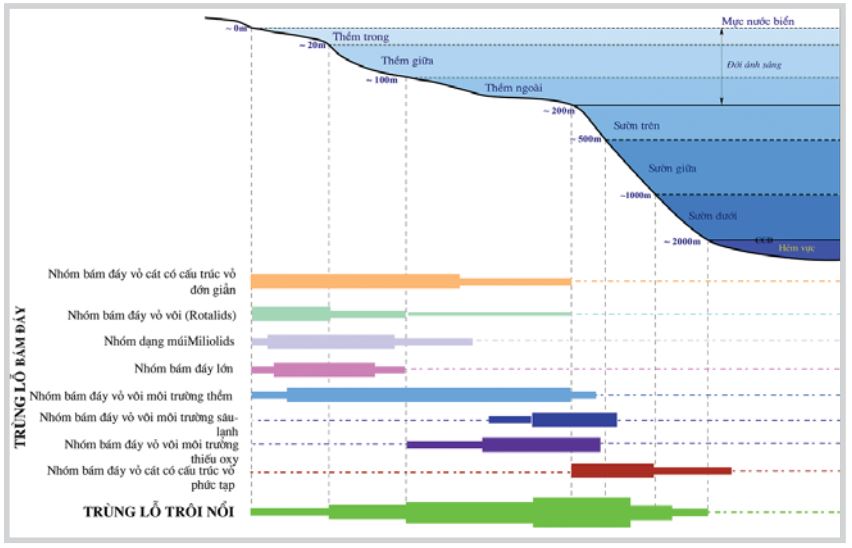Using analysed foraminiferal parameters for evaluating the changes of foraminiferal assemblage and determining well depositional environment in Nam Con Son basin
Abstract
In the foraminiferal study, the parameters of foraminifera analysis include percentage of remaining sandstone, abundance and diversity index, planktonic/benthonic ratio and the variation of benthonic groups are useful indicators for evaluating the changes of foraminifera, depositional environment and correlation work. A total of 129 ditch cuttings were used and processed within the depth range of 1.690 - 4.535m. 165 genera were identified in the sediments of Nam Con Son basin, including 51 planktonic, 106 benthonic and 8 larger foraminiferal species. By using these parameters in this study, the Miocene stratigraphic range has been defined in detail, from N5 to N18, and the depositional environment is indicated from transitional condition in Early Miocene to outer neritic and upper bathyal in Late Miocene. The study can help to improve the results of further biostratigraphy research, especially in high resolution biostratigraphy.
References
2. J.P.Kennett, M.S.Scrinivasan. Neogene planktonic foraminifera: A phylogenetic atlas. Hutchinson Ross Publishing Company. 1983.
3. Severyn Kender, Michael A.Kaminski, Robert W.Jones. Early to middle Miocene foram from the deep-sea Congo Fan, offshore Angola. Journal of Micropaleontology. 2008; 54(6): p. 477 - 568.
4. Robert Wynn Jones. Foraminifera and their applications. Cambridge Uniersity Press. 2014.
5. R.A.Fisher, A.S.Corbet, C.B.Williams. The relationshipbetween the number of species and the number of individuals in a random sample of an animal population. Journal of Animal Ecology. 1943; 12(1): p. 42 - 58.
6. John W.Murray. Ecology and applications of benthic foraminifera. Cambridge Uniersity Press. 2006.
7. Kiel. Biodiversity and biogeography of recent benthic foraminiferal assemblage in the south-western South China Sea (Sunda Shelf). 2001.
8. C.E.Shannon. A mathematical theory of communication. Bell Labs Technical Journal. 1948.
9. Brian McGowran. Biostratigraphy: Microfossils and Geological Time. Cambridge Uniersity Press. 2005.
10. Marcelle K.Boudagher-Fadel. Evolution and geological significance of larger benthic foraminifera. Developments in Palaeontology & Stratigraphy. 2008.

1. The Author assigns all copyright in and to the article (the Work) to the Petrovietnam Journal, including the right to publish, republish, transmit, sell and distribute the Work in whole or in part in electronic and print editions of the Journal, in all media of expression now known or later developed.
2. By this assignment of copyright to the Petrovietnam Journal, reproduction, posting, transmission, distribution or other use of the Work in whole or in part in any medium by the Author requires a full citation to the Journal, suitable in form and content as follows: title of article, authors’ names, journal title, volume, issue, year, copyright owner as specified in the Journal, DOI number. Links to the final article published on the website of the Journal are encouraged.




